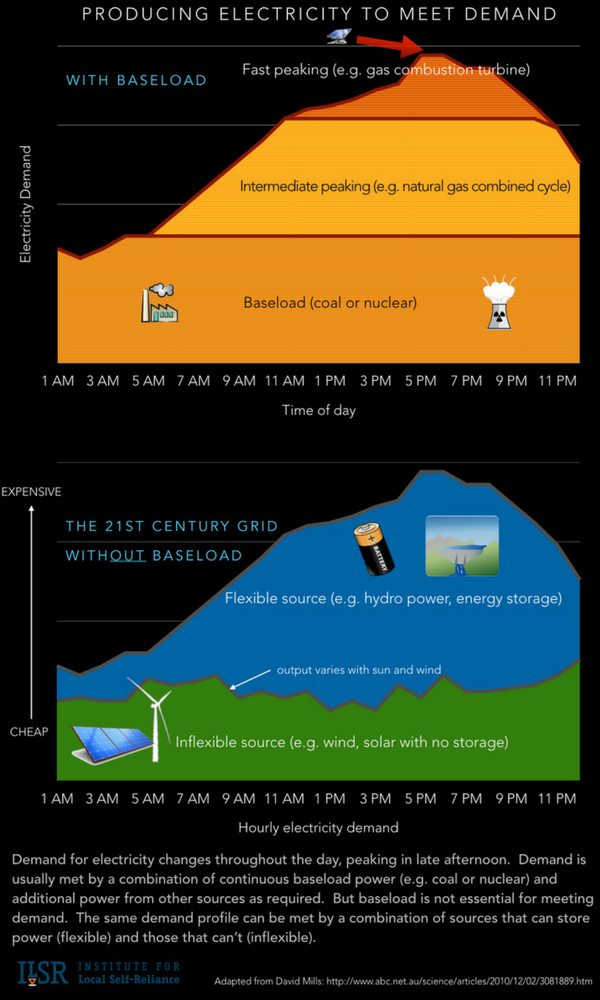Should Energy Storage Share The Tax Credits For Renewable Energy?
Originally published at ilsr.org.
This article was written by Nick Stumo-Langer, the Institute for Local Self-Reliance’s Communications Manager. He runs all of ILSR’s social media channels and previously was an Energy Democracy initiative Research Associate.
In May of 2016, the US Representative from Silicon Valley, Mike Honda (D), introduced the Energy Storage for Grid Resilience and Modernization Act (H.R. 5350). In short, this bill extends the current 30% Renewable Energy Tax Credit (which was just extended last year) to energy storage technologies, not just the wind, solar, and geothermal power plants that feed electricity into the grid.
This bill would help accelerate deployment of energy storage that’s already underway, and that can play a pivotal role in the expansion of renewable energy.
Here are a few ways energy storage can help.
Balancing Supply and Demand
The big change wrought by renewables is flipping the grid, from a focus on providing electricity to match demand to making both supply and demand flexible. The following graphic illustrates. Among other technologies (like pumped hydro storage, or even fast-response natural gas power plants) batteries can respond instantly to gaps in supply or demand.
Providing Reliable, Quality Power
Batteries also provide an important service called “reactive power” that maintains the grid’s constant voltage. Since the motors and devices we use depend on a consistent voltage, and traditional power plants struggle to do this over long distances, distributed energy storage means higher quality and more reliable power.
Lowering Costs
For electric customers with their own storage system, it can help them reduce costs, sometimes significantly. For many customers, electricity prices are higher at certain times of day, and charging the battery when power is cheap and tapping into it when power is expensive — called arbitrage — can reduce the cost of electricity.
For commercial customers, it’s even more beneficial, since a portion of their electric bill is based upon their highest use in any hour of the month. If the battery (typically in concert with a solar array) can shave that peak, it can substantially reduce costs.
The graphic below, from an energy management company, shows how the battery storage system was able to change the company’s electricity use. The green line with the peaks was the old usage, the blue line represents the new usage with the storage system.
Storage Already in Practice
In Minster, Ohio, a solar plus energy storage system significantly reduces energy costs for the city’s municipal electric utility in a number of ways, including: “deferring transmission and distribution costs, improving power quality, and shaving peak demand.” In the graphic below, we can see the way battery storage combined with solar can shave peak energy use.

Islands are particularly good candidates for these renewable energy plus storage systems, simply by necessity. Islands are “constrained electricity systems” that would (and do) have to import coal or natural gas, but are greatly benefited by renewable energy systems that include storage. Constructing solar energy arrays plus storage keeps excess energy production local and usable in these geographically remote areas.
It’s not just solar and storage arrays that could potentially take advantage of these tax credits. Electric vehicles (and their owners) can also benefit from storing energy during low demand periods. The “batteries charge on low-cost electricity, and they can later sell that power back to the grid when prices rise during periods of high demand, making a profit” on their vehicles’ energy usage and shifting the energy load to cut peaks and troughs. Even if an electric vehicle never sells any electricity back to the grid, simply being able to charge at nighttime when prices are low (and absorbing excess power production) is a valuable grid service.
Energy storage systems are poised to become crucial pieces of any renewable energy system, whether it’s Minster’s renewable energy system or any number of microgrid systems across the country.
Subscribe to our weekly Energy Democracy update or follow us on Twitter or Facebook.
Photo Credit: Public Domain Pictures, Pixabay via CC 2.0.
Have a tip for CleanTechnica? Want to advertise? Want to suggest a guest for our CleanTech Talk podcast? Contact us here.
Latest CleanTechnica.TV Video

CleanTechnica uses affiliate links. See our policy here.


